10 Wheelchair-friendly Trails Through the Country's Best National Parks
These accessible national park trails are suitable for people using wheelchairs, scooters, crutches, and walkers.
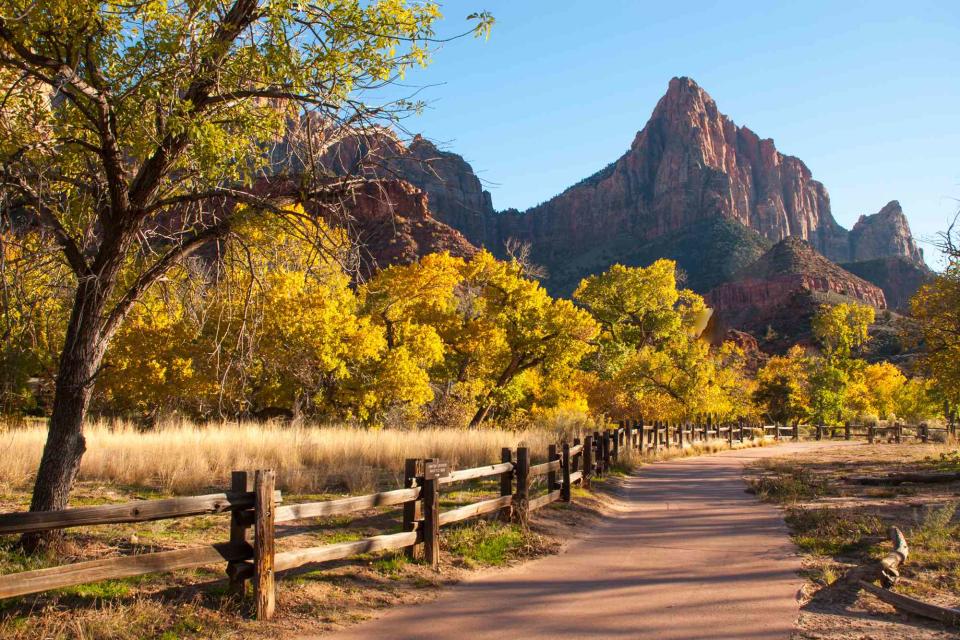
Robert_Ford/Getty Images
The United States is the fourth-largest country in the world, filled with sites that showcase the nation's heritage and landscapes that are unlike anywhere else on Earth. Protected and preserved for the public by the National Park Service, these sites can be enjoyed by everyone — including people who use mobility devices to get around.
And while most national parks still have a long way to go in becoming more accessible to people that use wheelchairs, scooters, and walkers, people with restricted mobility can still experience the national park system on adaptive hiking trails. You just have to know where to go and what to expect.
The National Park Service app is a great place to start — it includes a list of wheelchair-accessible places for over 400 parks. For more detailed information on trail grade, quality, and firmness, you’ll want to visit the park’s website and search for an accessibility map. There, you’ll also be able to see if the park has loaner devices that can help you better experience the park. Great Sand Dunes National Park, for example, has balloon-tire wheelchairs that are made for navigating the park’s sandy dunes.
Miriam Eljas, the CEO and co-founder of accessibleGO, a hotel booking site that specializes in accessible rooms and acts as a hub for information on accessible travel, recommends that visitors research accessible bathroom facilities before they arrive, bring their mobility device fully charged (if applicable), and pack along their own ramp.
For first-hand accounts of other people’s experiences at a park, Eljas says you can “use accessibleGO's community forum to see if anyone else has been to the park you have in mind to visit. First-hand accounts are better than any information you will find online!”
For example, accessibleGo user “Garatzel” shared on the accessibleGo forum, “If you go to the Grand Canyon, show the ranger at the entrance booth (make sure you're in the left lane) your handicap placard. They will give you a pass and the daily gate code to use the same roads as the federal transportation buses. This will allow you to park right next to all the different sites instead of having to walk to them with the crowds.”
It’s also worth noting that people with permanent disabilities can get free, lifetime Access Passes to national parks across the country. Here are 10 accessible trails in some of the country's most popular national parks.
Related: 10 Wheelchair-accessible Beaches in the U.S.
Trail of Time in Grand Canyon National Park, Arizona
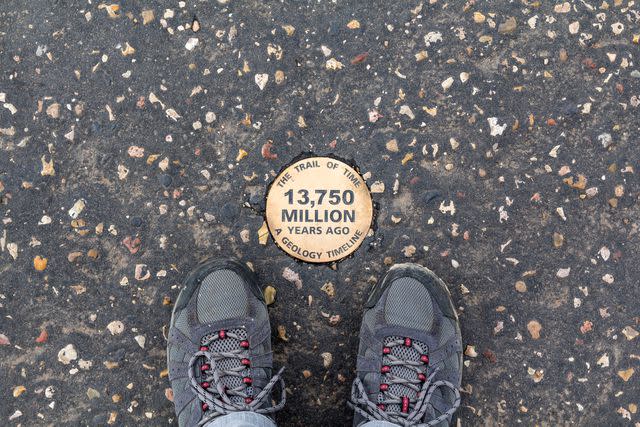
agafapaperiapunta/Getty Images
The Trail of Time is fully paved and relatively flat, and it's just under three miles long. Along the journey, you’ll follow the Grand Canyon’s geological history back in time (or forward, depending on your route). Each meter on the trail signifies one million years, and a series of exhibits and rocks explain how the canyon was formed.
It’s also worth noting that Grand Canyon National Park has long been considered one of the most accessible parks in the country, with 24 wheelchair-accessible trails.
Related: 14 Best Grand Canyon Viewpoints
Boardwalk Loop Trail in Congaree National Park, South Carolina
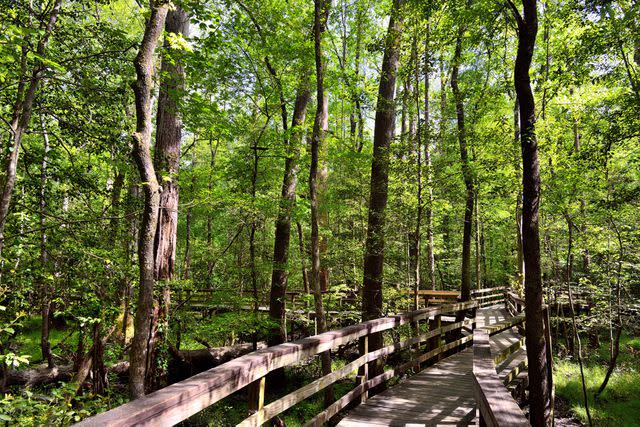
Mark C Stevens/Getty Images
All visitors to Congaree National Park are encouraged to walk the 2.6-mile Boardwalk Loop Trail, which provides an introduction to the park and passes by some of the preserve’s most impressive trees — including the Big Bald Cypress and the Big Loblolly Pine. The trail is flat, shady, and relatively smooth.
Big Trees Trail in Sequoia National Park, California
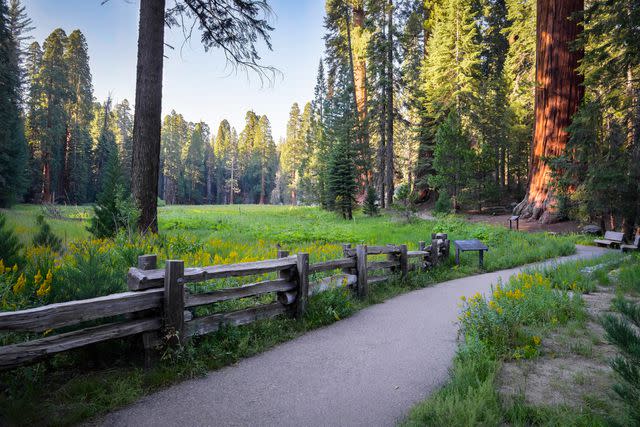
Westend61/Getty Images
Adaptive hikers can get out among the impressive sequoia trees on this 0.7-mile loop that circles a meadow in Sequoia National Park. While the route is flat and paved, it is not uncommon to spot yellow-bellied marmots and even bears along the trail.
Trail of the Cedars in Glacier National Park, Montana
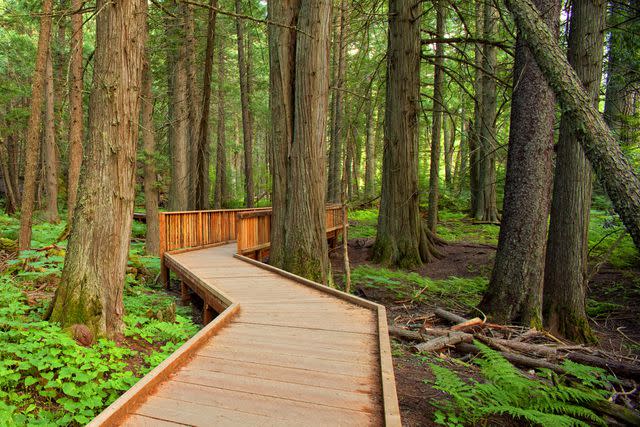
Tomas Nevesely/Getty Images
In addition to driving the park’s iconic Going-to-the-Sun Road, people with mobility limitations can hop on the Trail of the Cedars, a 0.7-mile trail that travels under old-growth cedars near Avalanche Campground. The nature trail is partially paved and partially made of a wooden boardwalk. Those looking for more should check out the Running Eagle Falls Trail.
Pa'rus Trail in Zion National Park, Utah
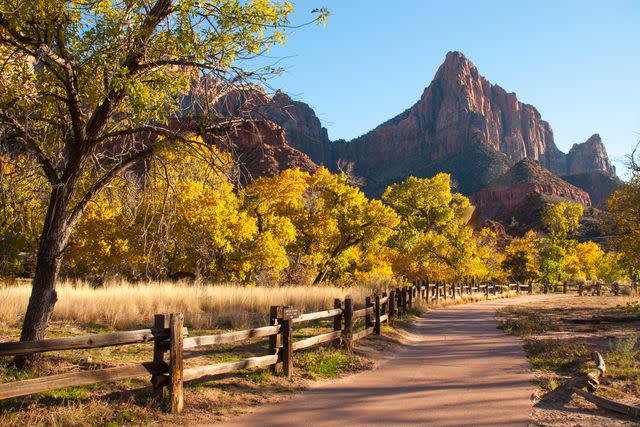
Robert_Ford/Getty Images
Pa’rus Trail boasts some of the best views of the Watchman, a 6,545-foot sandstone mountain, in the entire park. In addition, the route travels alongside the Virgin River and is wonderfully smooth and easy to navigate — it’s paved and wide with around 50 feet of elevation change. To get to the Pa’rus Trail, you’ll need to navigate a short connector trail that is not designed for wheelchairs, so come prepared.
Sugarlands Valley Nature Trail in Great Smoky Mountains National Park, Tennessee and North Carolina
If you’re visiting Great Smoky Mountains National Park and have a mobility impairment, the Sugarlands Visitor Center is a great place to start. The visitor center is open year round and has accessible bathrooms and parking. It’s also the starting point for the half-mile Sugarlands Valley Nature Trail, a paved route that travels under second-growth forest along the Little Pigeon River.
Other accessible hiking trails in the park include Bradley Fork Trail and Little River Trail.
Jesup Path and Hemlock Path Loop in Acadia National Park, Maine
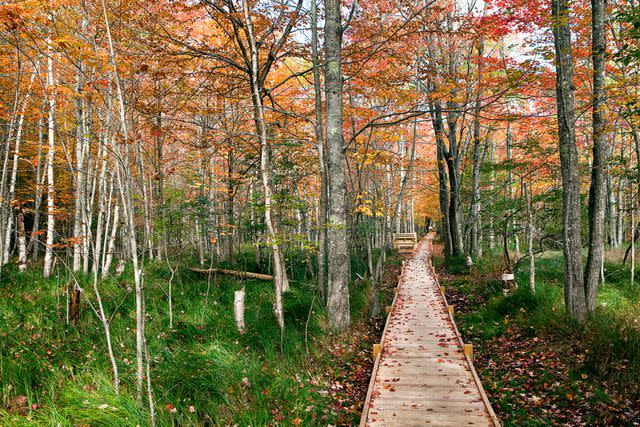
Copyright Byron M. O'Neal/Getty Images
The trail on the figure-8-shaped Jesup Path and Hemlock Path Loop is composed of gravel roads and wooden boardwalks that run through a boggy, white birch forest. The 1.5-mile route is mostly level, with enough space for a single wheelchair.
Another option within Acadia National Park is the Ocean Path, an accessible trail that travels along the coast.
Limberlost Trail in Shenandoah National Park, Virginia
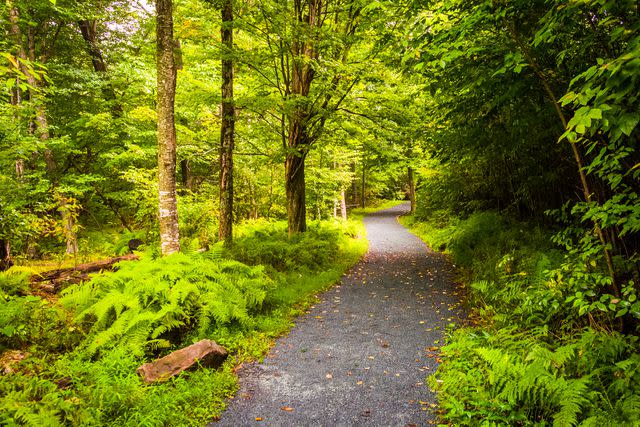
AppalachianViews/Getty Images
The 1.3-mile Limberlost Trail is primarily made of crushed greenstone, which provides an even surface. The route is typically five feet wide and has 130 feet of elevation gain. The forested route is also a favorite spot for birding, so don’t forget to look up!
Old Faithful Geyser Loop in Yellowstone National Park, Wyoming
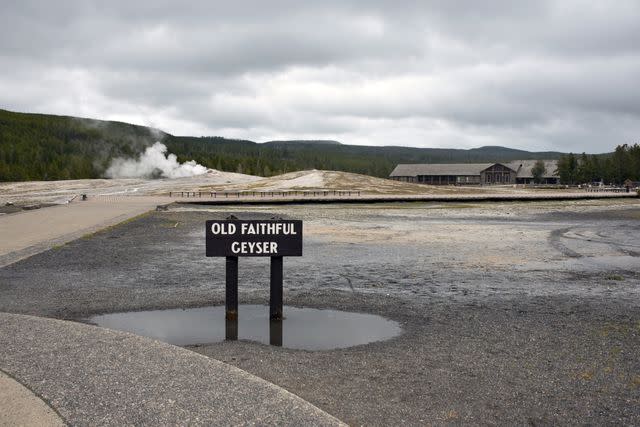
BethWolff43/Getty Images
The oldest national park in the U.S. has several trails that are designed to accommodate mobility devices, but no visit to Yellowstone National Park is complete without a visit to Old Faithful. The geyser, which has made a name for itself for its predictability, can be seen from all angles on the Old Faithful Geyser Loop trail.
Desert Discovery Trail in Saguaro National Park, Arizona
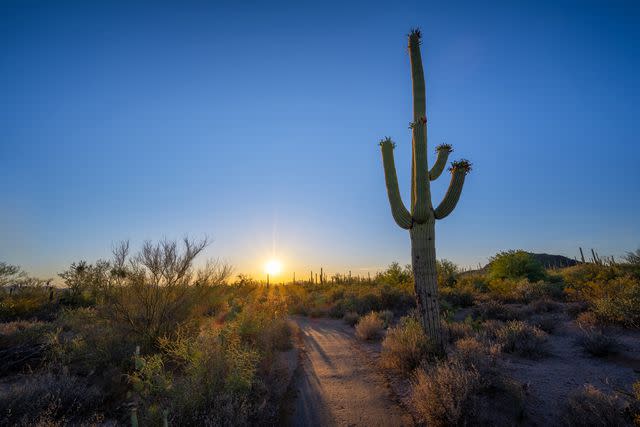
Michael Ver Sprill/Getty Images
The Desert Discovery Trail travels among the park’s impressive saguaro cacti, which can reach heights of 40 feet. The half-mile route is paved and provides a nice introduction to the habitats and ecology of the Sonoran Desert. The trail is especially popular at sunrise and sunset when the silhouettes of the saguaro loom against the colorful sky.
For more Travel & Leisure news, make sure to sign up for our newsletter!
Read the original article on Travel & Leisure.

